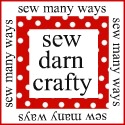How much stress do you feel when you hear this question: What’s for dinner?
a.) None
b.) A little
c.) A lot
Most people, especially those with kids, would probably answer c, a lot. To reduce this stress in our home, I try to plan our meals in advance so that both the Mr. and I know what’s planned for dinner each night. I’m here today to share that process with you.


To reduce grocery expenses and avoid excess spending, I recommend setting a weekly or monthly grocery budget for you and your family. While this isn’t a necessary step in the meal planning process, it gives me a starting point and a goal to reach when I’m making my shopping list. This amount will vary greatly based on your household income and size of your family. Set a number that works best for you.

To keep this process organized, it helps to keep your meal planning supplies in one place. Grab a pen, a pad of paper or meal plan printable, your family’s favorite recipes, new recipes you’d like to try, coupons, and local store ads. Consider keeping these items in a binder, folder, or basket stashed in a place that is easy to access.

I create my meal plan on Wednesday afternoons and usually do my grocery shopping Friday evening or Saturday morning depending on our plans for the weekend. Stores seem to be well stocked on Sunday’s and Monday’s when the new sale ad goes into effect, but these days don’t work well with my schedule. Set a day or day range that you will typically do your shopping. Then, set a 30 minute window of time in your schedule that you will devote to meal planning prior to your shopping trip. Make this a strict date with yourself to keep that stress level down.
 I look through two ads each week to see what is on sale at our local stores. Sometimes I write items down, other times I just make a mental note of items that are on sale. Obviously you don’t need to write down EVERY item on sale. You know what your family likes and the items you’re used to buying, so jot down any significant sales on those items.
I look through two ads each week to see what is on sale at our local stores. Sometimes I write items down, other times I just make a mental note of items that are on sale. Obviously you don’t need to write down EVERY item on sale. You know what your family likes and the items you’re used to buying, so jot down any significant sales on those items.  Sometimes just a quick look through the pantry or the freezer will help you remember that you have 12 cans of diced tomatoes or 5 pounds of ground beef you forgot about. Jot these items down as well.
Sometimes just a quick look through the pantry or the freezer will help you remember that you have 12 cans of diced tomatoes or 5 pounds of ground beef you forgot about. Jot these items down as well. Take a look at your calendar to determine what your family’s schedule looks like for the period you are planning for. There will be some days that you have events elsewhere and won’t need to cook (like a church potluck or neighborhood party). There will be some days when you know you will have about five minutes to prep for dinner and other nights where you may have 35 minutes. Make a note of these things on your pad of paper or menu plan. If we have a family gathering at Mom’s house on Saturday for dinner, I will write “Mom’s” under Dinner on Saturday. This reminds me I don’t need a meal for that day.
Take a look at your calendar to determine what your family’s schedule looks like for the period you are planning for. There will be some days that you have events elsewhere and won’t need to cook (like a church potluck or neighborhood party). There will be some days when you know you will have about five minutes to prep for dinner and other nights where you may have 35 minutes. Make a note of these things on your pad of paper or menu plan. If we have a family gathering at Mom’s house on Saturday for dinner, I will write “Mom’s” under Dinner on Saturday. This reminds me I don’t need a meal for that day. Take a look at your family’s favorite recipes and match recipes to items that are on sale or items you have a large supply of at home. For example, if pasta and pasta sauce is on a big sale one week, I might plan a meatless pasta meal with alfredo sauce and a meal of spaghetti and meatballs.
Take a look at your family’s favorite recipes and match recipes to items that are on sale or items you have a large supply of at home. For example, if pasta and pasta sauce is on a big sale one week, I might plan a meatless pasta meal with alfredo sauce and a meal of spaghetti and meatballs.  List out the days of the week on your pad of paper or grab your printable meal plan. Jot down a meal for each day. On days you will be pressed for time, fill in a meal that is quick to prepare or that you can prepare the night before.
List out the days of the week on your pad of paper or grab your printable meal plan. Jot down a meal for each day. On days you will be pressed for time, fill in a meal that is quick to prepare or that you can prepare the night before. 
Make a list of all the items you will need to prepare your meals for the week. I like to write down every ingredient and then go back through my cupboards and freezer and cross off anything I already have. This way I don’t miss anything. But if that is too time consuming, just write down the things you know you need to buy.

Stick to your list and your budget. If you buy a lot of the same items each week, you will get to know how much each item costs and this will better help you prepare a plan that fits easily into your budget. I often take a calculator to the store with me and add my total as I add items to my cart. If I get to the end and see that I’m over, I can take out items that are not a necessity.
Bonus Tips:
- Ask your family members what sounds good for dinner that week. You don’t have to come up with all of the ideas on your own.
- Organize your grocery list by zone. You may not know exactly what aisle the frozen pizza is located in, but you know where the frozen food section is, the produce section, the bakery, etc. Putting your list in this order will help you to not miss anything and also speed up your time at the store.
- Pick one recipe each week to double. Make a double batch (on a night you have time) and freeze the second half for a busy night in the future.
- Plan every component of your meal. In other words, consider side dish ideas, breads, etc that you plan to serve with dinner. This will help you avoid having to run back to the store for something to serve with your main dish.
- Plan every meal of your week. My meal plan consists of breakfast, lunch, dinner and two snacks per day. We don’t always stick to this plan strictly, but it ensures that we have enough food on hand for the week.
- Clip your recipes for the week to your meal plan or hang them on the fridge. This way, when it’s time to prep dinner, you don’t have to dig through your cookbook to find the recipe. And, if you’re lucky, someone else will see what’s planned for dinner and grab the recipe and make it for you!
Most importantly, don't let the menu planning process create MORE stress for you. It should be a tool that helps your week to flow a bit more smoothly. Adjust these steps to what works best for you and your family. I'm happy to answer any questions you may have about creating your own menu plan!
This post was shared in a link party over at:


This post was shared in a link party over at:





































